Idea by
Matevž Straus and Razvan Zamfira
CORPORATE LANDSCAPES MAGAZINE
http://www.corporatelandscapes.org
Call for ideas 2017
Company Towns of Innovation
Company Towns of Innovation

In the contemporary innovation-based economy, disruptive new ideas are king. But new ideas do not emerge within the four walls of factories and offices, built by architects. Today our cities – created through much complex, longue duree and multi-party processes – are the place where we collaborate, re-think, collide, pivot, create and prosume. So how to create truly inspiring workplaces/cities today? “Company towns” are one of the more successful attempts, as depicted in our recent study of 12 world-renown companies. These small and often disregarded towns are, contrary to the belief of the academia and praxis, innovating on several levels – developing a very distinct architecture and urban design that arises from a unique governance regime with specific social, technological and economic goals. Our project thus envisions a possible future for numerous small, yet innovative and global towns and sheds a light on a much richer and non-uniform future of our urban landscapes.
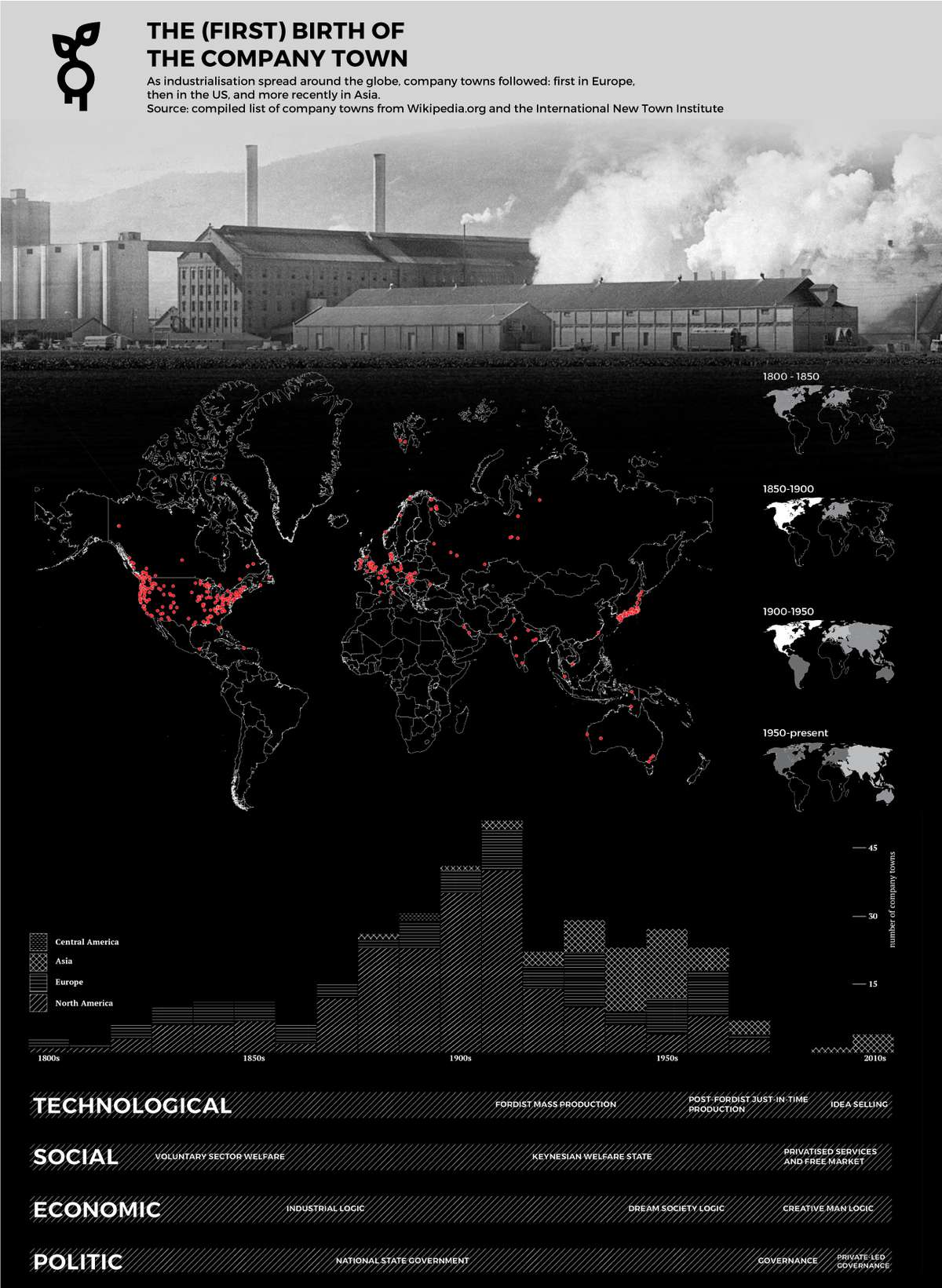
The first company towns emerged in the 19th century as a reaction of big industrialists to the unfavourable conditions in the cities and the lack of social care for their employees. Just in a few decades, company towns spread across the globe, yet were normalised with the emergence of the welfare state.
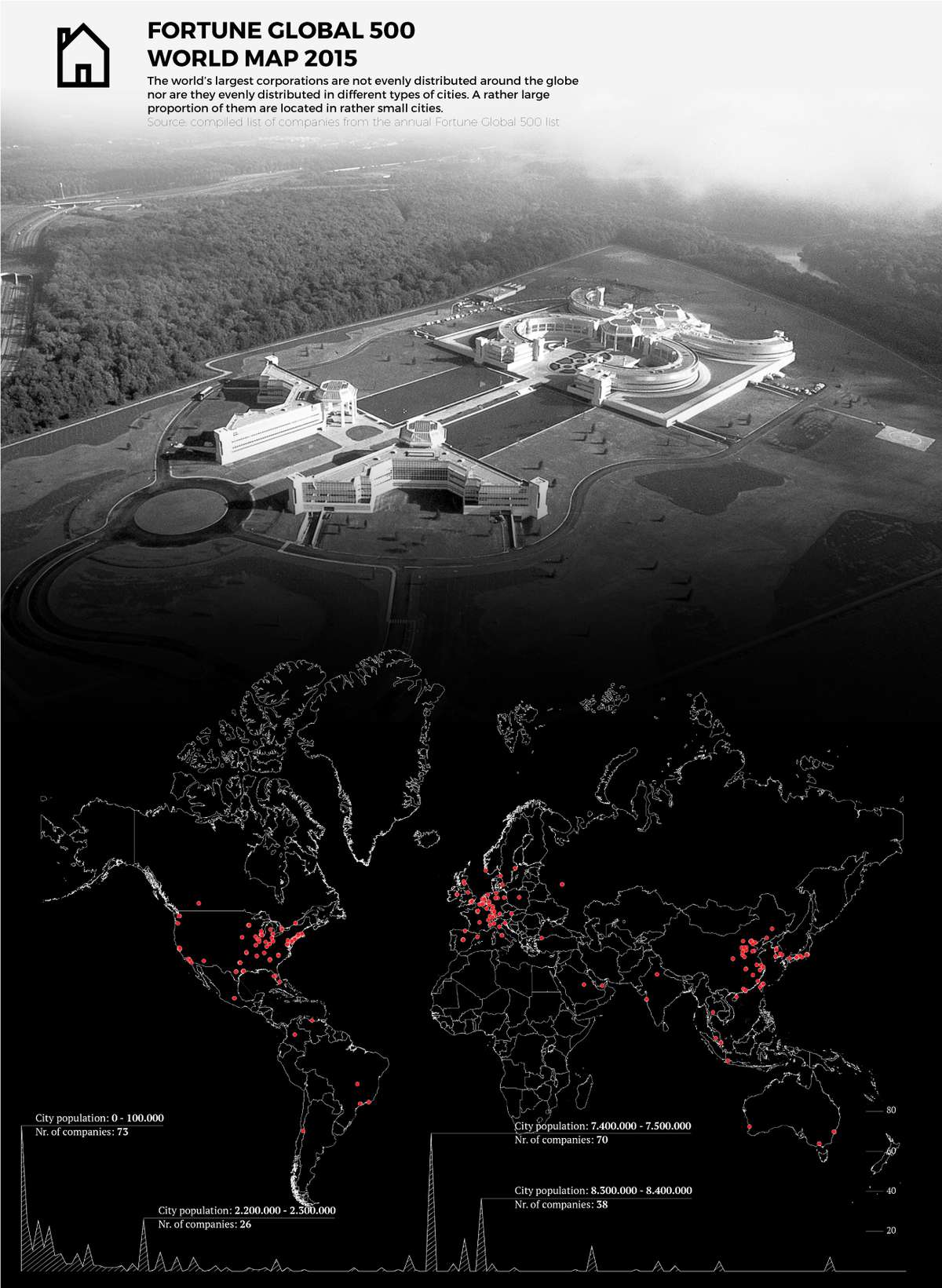
The world’s largest corporations are not evenly distributed across the globe nor are they evenly distributed in different types of cities. A rather large proportion of them are located in rather small cities and towns.
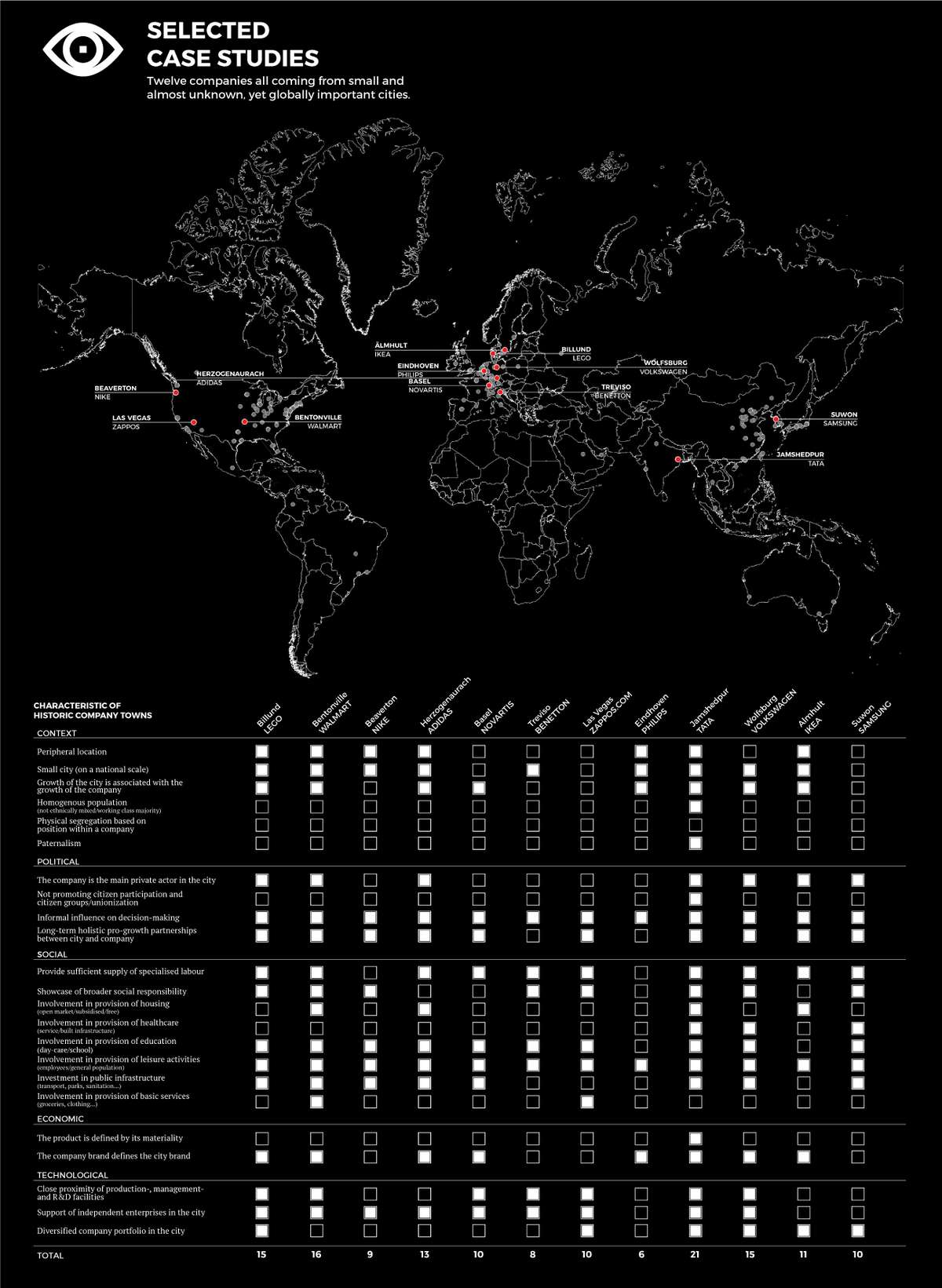
Twelve case studies of rather small cities with large corporations share many characteristics of contemporary company towns – in political, social, economic and technological terms.
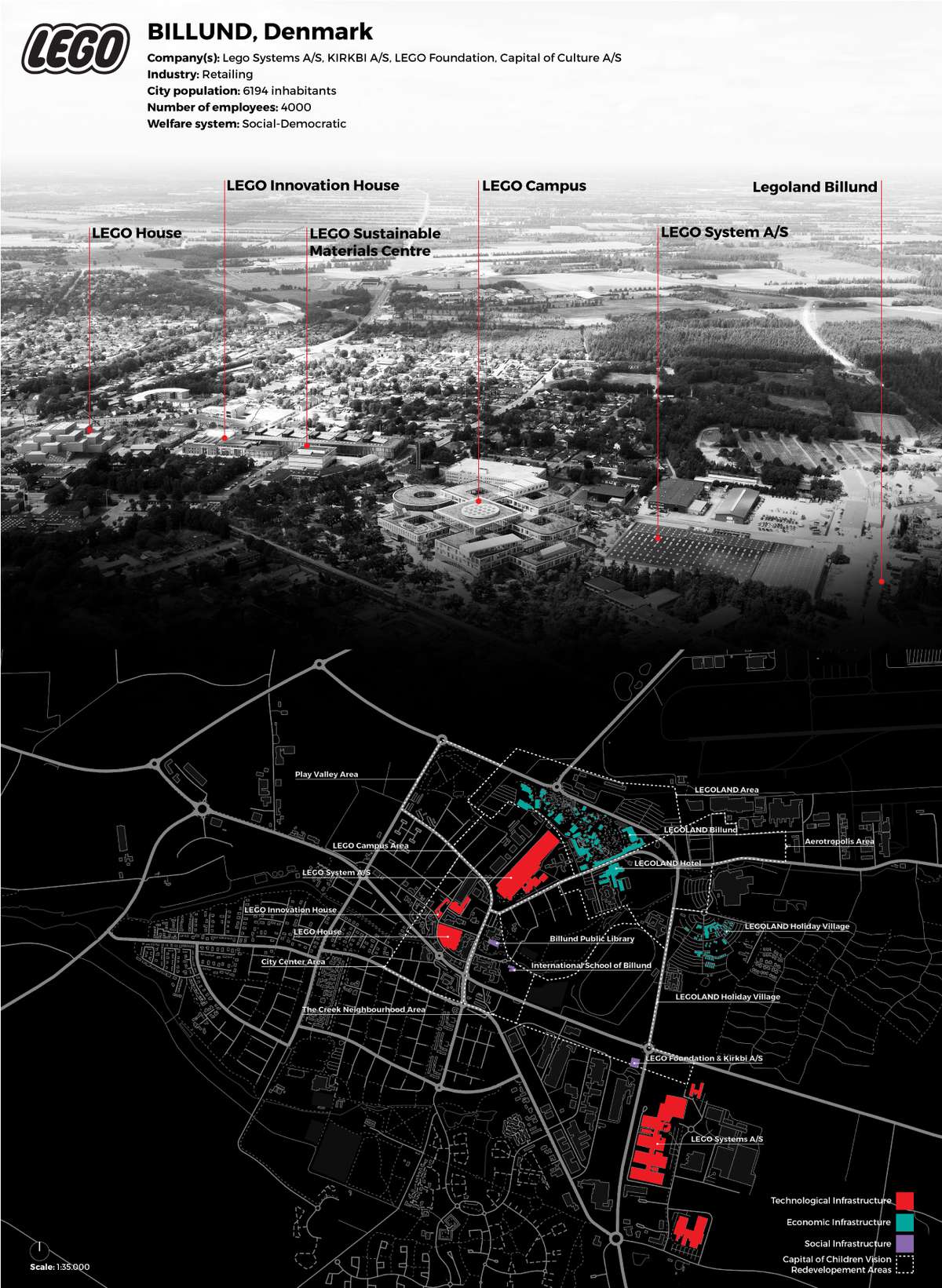
The capital of children vision will transform Billund into a truly urban environment while helping LEGO expand its brand experience from its current enclosed theme parks towards a whole urban environment, making Billund a large scale brand experience scape.
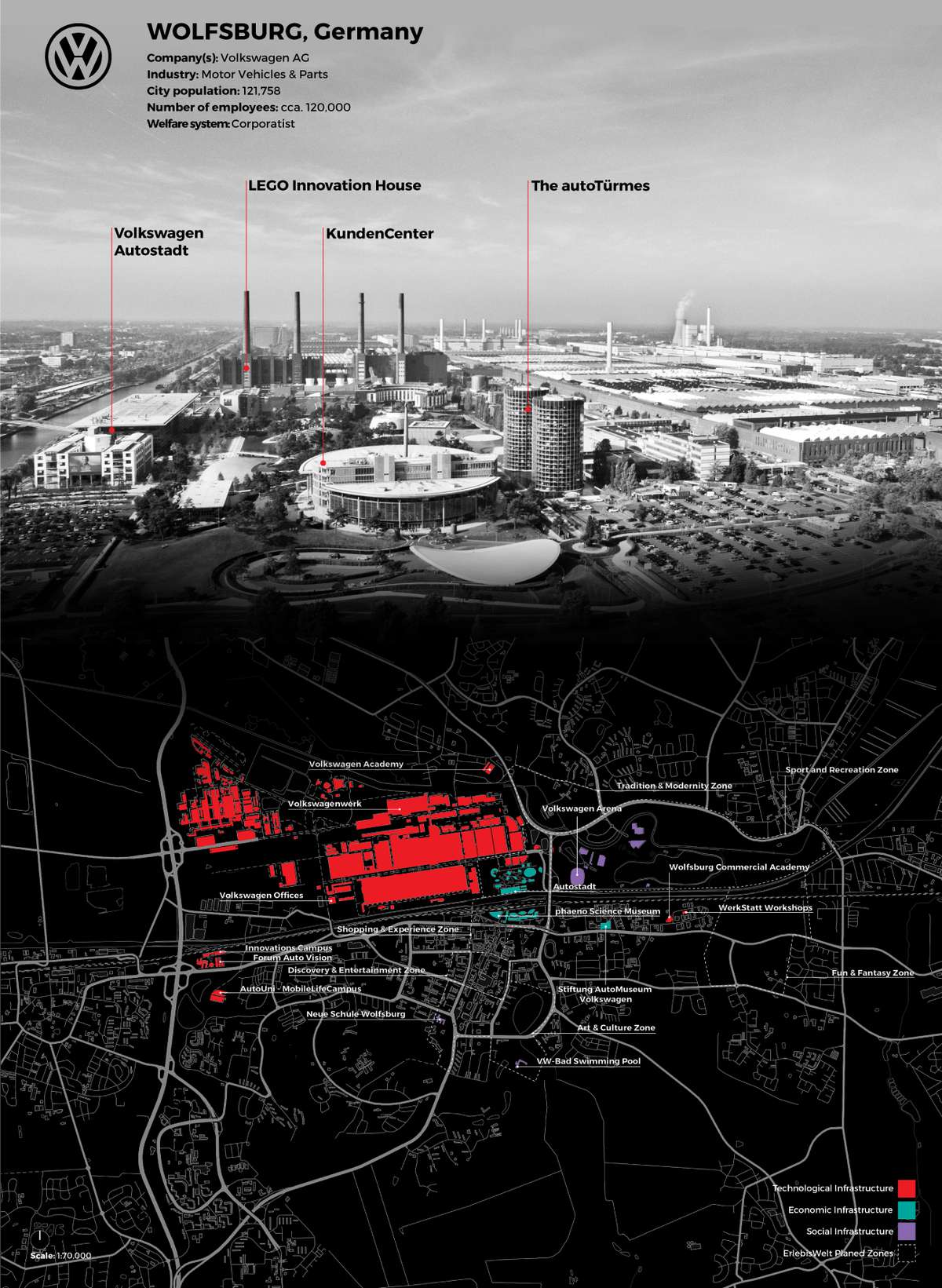
After a structural crisis with 19,3 % unemployment rate in 1990s, several joint initiatives between the Municipality of Wolfsburg and Volkswagen AG turned the course of events around and transformed the city into the richest city in Germany.
Company Towns of Innovation
Company Towns of Innovation

In the contemporary innovation-based economy, disruptive new ideas are king. But new ideas do not emerge within the four walls of factories and offices, built by architects. Today our cities – created through much complex, longue duree and multi-party processes – are the place where we collaborate, re-think, collide, pivot, create and prosume. So how to create truly inspiring workplaces/cities today? “Company towns” are one of the more successful attempts, as depicted in our recent study of 12 world-renown companies. These small and often disregarded towns are, contrary to the belief of the academia and praxis, innovating on several levels – developing a very distinct architecture and urban design that arises from a unique governance regime with specific social, technological and economic goals. Our project thus envisions a possible future for numerous small, yet innovative and global towns and sheds a light on a much richer and non-uniform future of our urban landscapes.
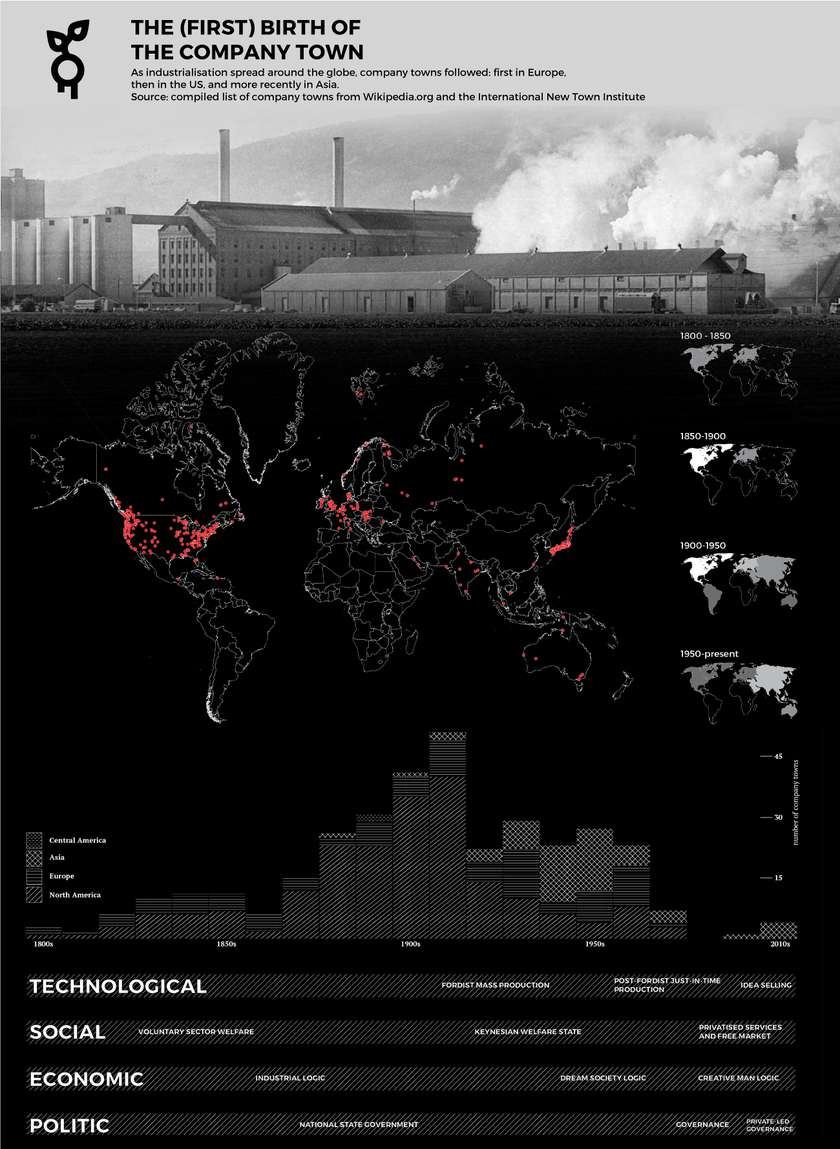
The first company towns emerged in the 19th century as a reaction of big industrialists to the unfavourable conditions in the cities and the lack of social care for their employees. Just in a few decades, company towns spread across the globe, yet were normalised with the emergence of the welfare state.
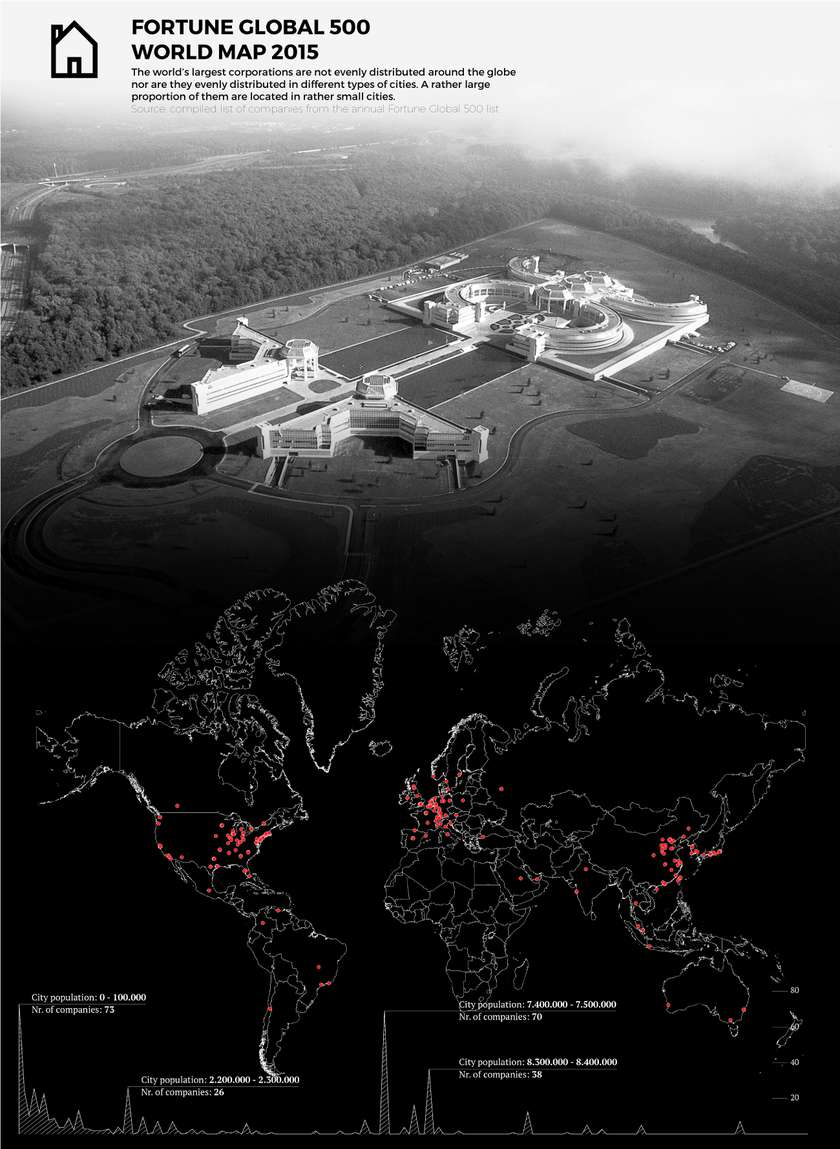
The world’s largest corporations are not evenly distributed across the globe nor are they evenly distributed in different types of cities. A rather large proportion of them are located in rather small cities and towns.
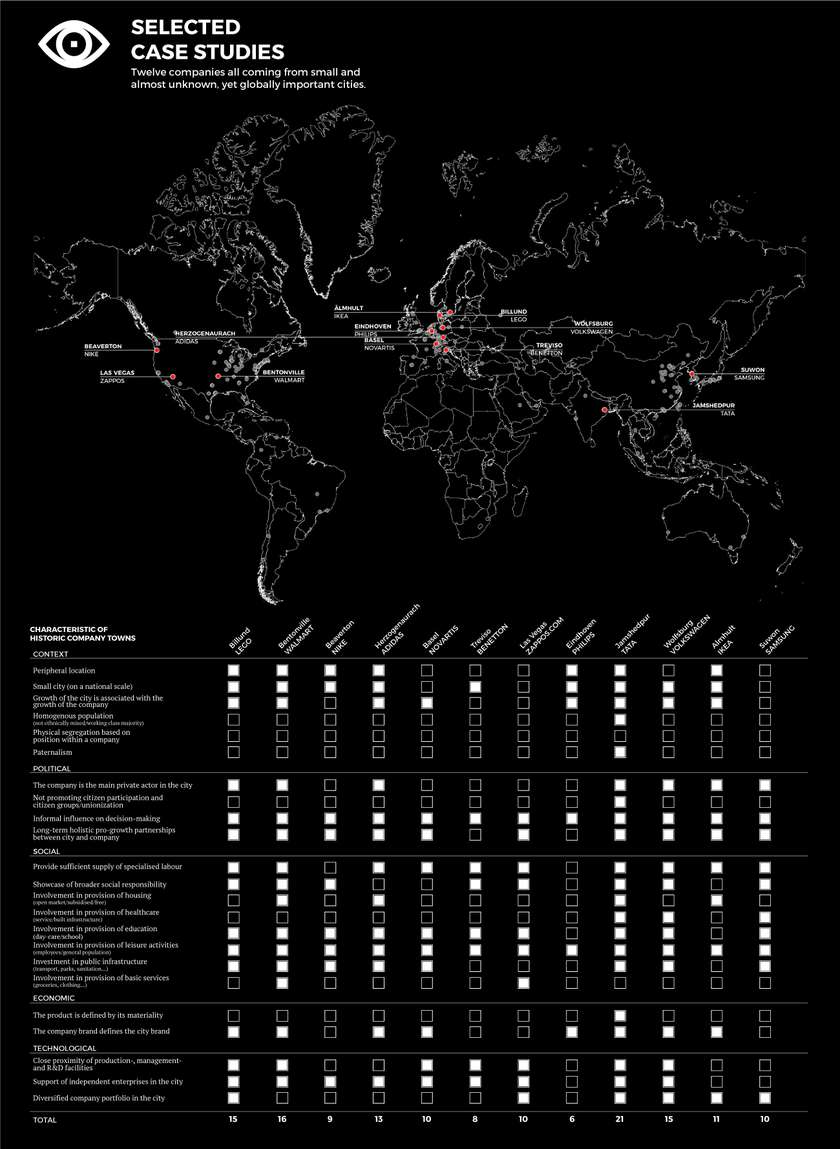
Twelve case studies of rather small cities with large corporations share many characteristics of contemporary company towns – in political, social, economic and technological terms.

The capital of children vision will transform Billund into a truly urban environment while helping LEGO expand its brand experience from its current enclosed theme parks towards a whole urban environment, making Billund a large scale brand experience scape.
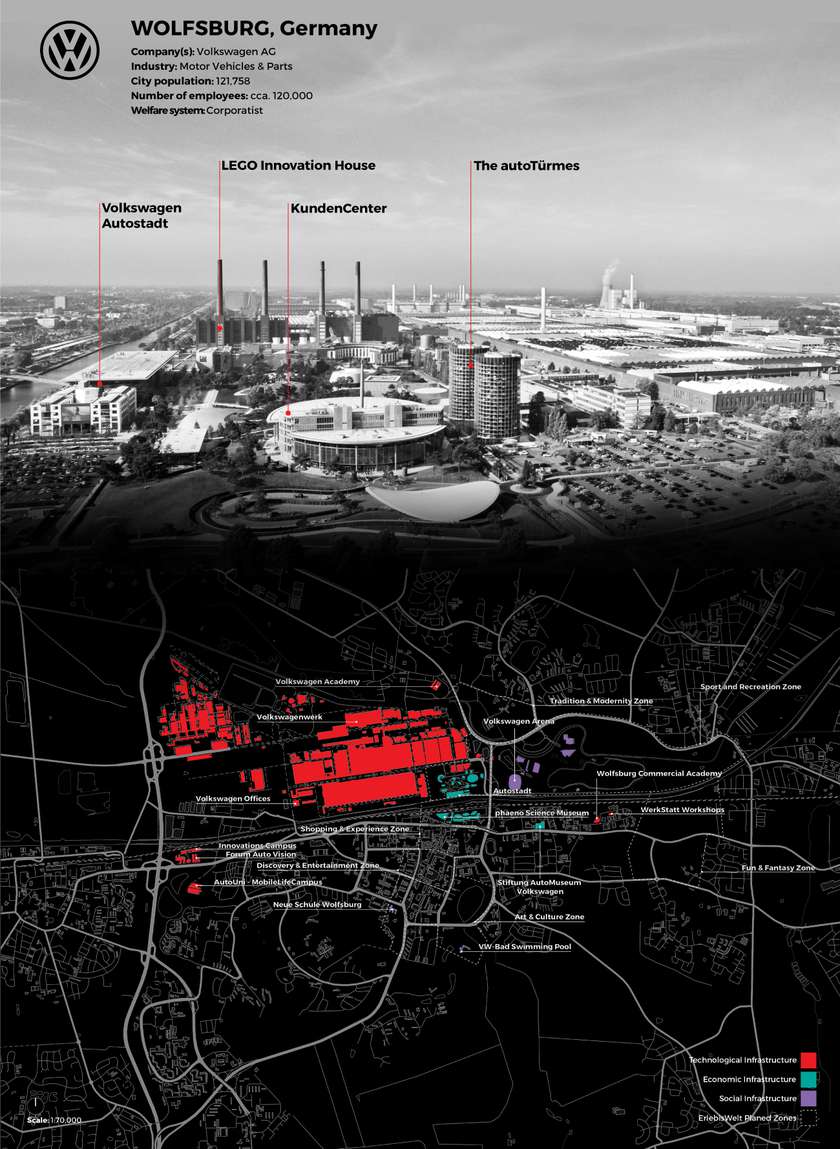
After a structural crisis with 19,3 % unemployment rate in 1990s, several joint initiatives between the Municipality of Wolfsburg and Volkswagen AG turned the course of events around and transformed the city into the richest city in Germany.